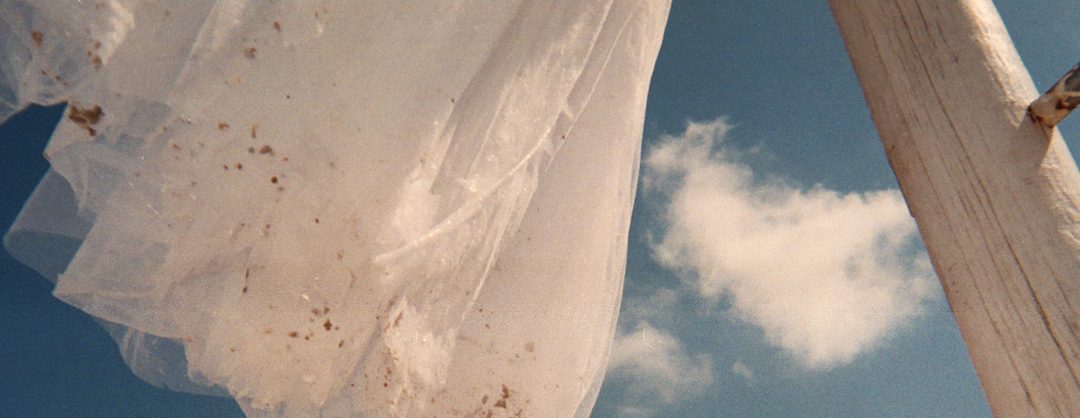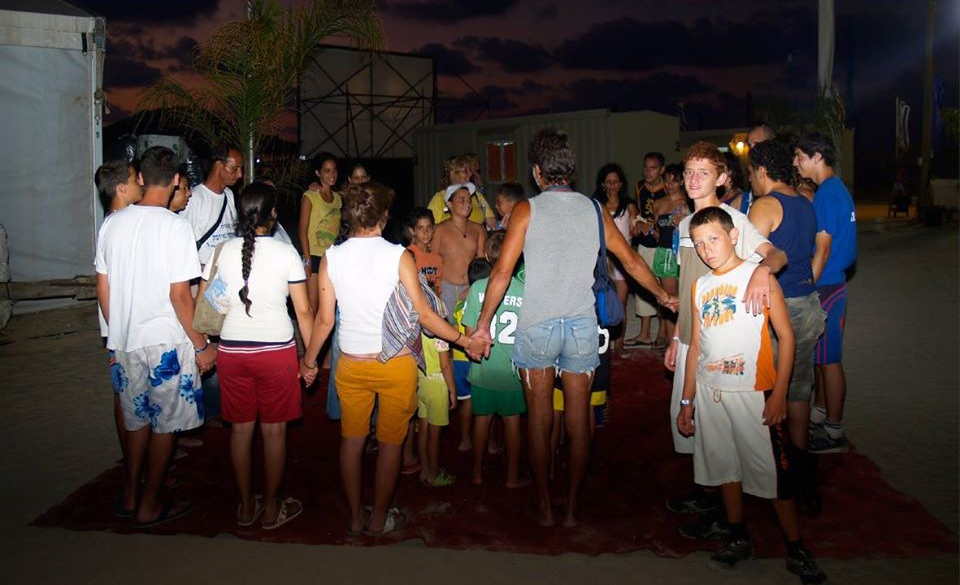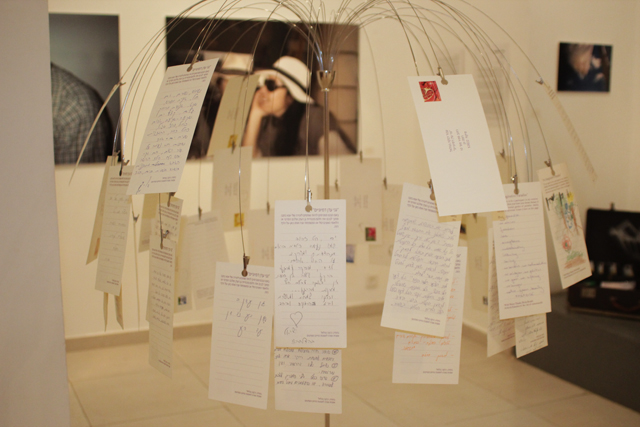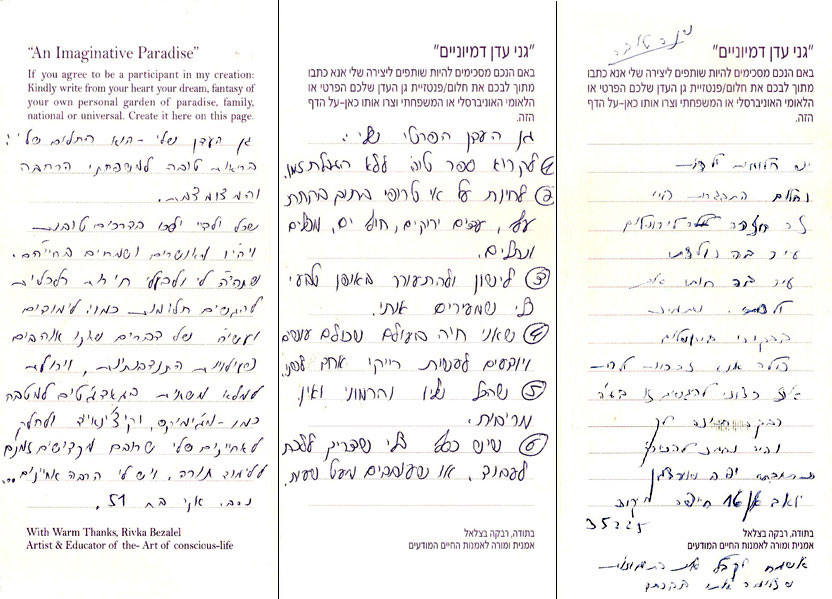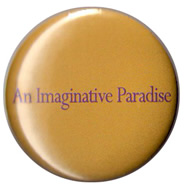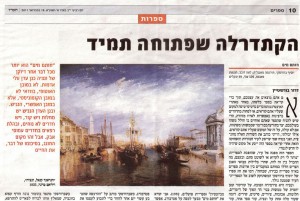
 Fashion Therapy is a new area attempting to connect fashion and therapy through fashion therapy: between the clothes, one wears and the emotions it generates in the one who wears them.
Fashion Therapy is a new area attempting to connect fashion and therapy through fashion therapy: between the clothes, one wears and the emotions it generates in the one who wears them.
The course suggested below is intended as preface workshop for fashion design students at higher education institutes and vocational schools and as practical workshop for seniors in the fashion industry (within the framework of master's class or colleagues workshop). The purpose of this course is to point out therapeutic aspects in fashion design; to intensify the existing links between the expression of personal emotions and the wearing of a garment and to actualize them while observing the production of that garment as the process of artistic creation. Namely, it begins with the imagination of the designer, continues with the artistic process of its actual production and ends with wearing the garment which contains the power to lead a therapeutic process in the wearer.
The aim of the Fashion Therapy course is to help one to understand the power of the material and its impact on emotions. What is the impact of the garment on the emotions? How can a garment create precision, elation, self –confidence or joie de vivre? How do the color, form or material which compose the garment, activate the emotions? What do children mean when they claim "I don’t want to wear this"? What in fact, are they trying to express through that? Why do girls ask for a 'twirling' dress? How is it that the jeans pants had kept their power as a most popular and loved item to wear for decades? How can a garment form the sensation of "a second skin" for its wearer? How can it lead the wearer to hold his head high and feel that he/she is wrapped with a sensation that may be described as "I found my place in the world"?
The first part of the Fashion Therapy course shall be directed at examining the fashion designer as an artist and his/her work of fashion as art. Consequently, the reference to the students in the course would be as to artists and not as to the producers of merchandise in the narrow and limiting sense of that word, since imagination and creativity compose the artist's personal language.
The painter and art researcher Vassili Kandinsky called the creative artists "The sun of art". He claimed that as such, the artist has the ability to travel the worlds of inspiration and imagination and then he earns the right to gather his experiences and information and present them – with new power and momentum- to the world around him.
The German artist Joseph Beuys – who is considered as the founder of the Happening and Performance art- believed in the therapeutic abilities of art and argued that it is the only one that may lead to social change. If the role of art in society is to bring something new to the world in order to make a change then a possible change through fashion therapy is healing.
At the theoretic tangent point with the professions that investigate the human soul and wish to cure it, there is the image of Abraham Maslow- one of the most salient founders of the humanistic school in psychology and the image of Alfred Adler founder of the individual psychology trend who regarded the human as a whole and holistic entity. Maslow (2013) argued that a musician must compose music, the painter must paint and the poet must write poetry. He explained that whatever a person can be-it is his duty to be it for the artist is the one mediating between the rich themes that evolve there and between his social environment and his daily life in the world.
In the second part of the Fashion Therapy course, we shall develop and improve the designers' abilities for empathy. This will be achieved through the comprehension of the "emotional experience" concept (with the assistance of theories from the areas of psychotherapy and psychology that focus on the body) and through his/her connection with the physical body and physical experience. Finding such connections between the internal, emotional world of the person and between his/her dressing experience will be bound by the fashion designer's responsibility for such experience. Fear, anger, frustration, joy or pleasure- all these are emotions linked to the human's emotional experience opposite the garment. The major understanding in the course is that that there is a need for overlapping or congruence between the human's inner, emotional world and the clothes that reflect him/her (Bat-Yaar, 2010).
In addition, the key concept, as expressed by Alber Elbaz – "emotional clothes"- shall guide that course.
All along history and at the basis of fashion changes there are psychological motives. Regarding this view, we shall observe works of fashion designers like Albert Elbaz, Alexander McQueen, Vivian Westwood, Cristobel Balenciaga, Pierre Cardin, Hossein Chalayan, Tamara Yovel-Jones, Dorin Frankfurt, Dina Glass and others as well as the fashion shows in recent years, at the Shenkar School for Fashion Design. We shall examine various works in order to find authentic expression of the creator in them and a specific, intentional emotional experience for the wearer.
Aiming to better comprehend the connections between art and healing, the methodology of the course shall include diverse sources covering various areas of research and expertise: fashion, art, psychology, philosophy, anthropology, body-language, music and color. If we suppose that art has the power to direct a person to that, which Aristotle called "the inner essence of things"; if we assume that creativity is the process leading to the creation of something original or the ability to lead the human to an original and meaningful product (Yanai, 2013), then the fashion therapy area raises queries. What is the experience of clothes wearing? What is its connection to the "feeling comfortable" or to the sensation of "being wrapped by a second skin "? If a garment is sewn and fits "like a glove", can it act as a kind of "home"? We shall examine the works by the fashion designer Sasson Kedem in view of these points.
Each lesson within the framework of the course shall integrate actual experiencing, transference of technical data about the specific theme of that lesson (please see specification in a separate document). In it, an attempt will be made to demonstrate and teach how it is possible to translate the creative imagination into an actual composition using therapeutic methods. How to create a garment while thinking about the person for whom one feels empathy? How to identify the needs of the wearer and that which he/she needs? How to settle self-confidence, joy, pleasantness or a sensation of nobility for example, through the preparation of the garment to be worn?
The Fashion Therapy course aims to open a window for the fashion design students to the world of therapy. It aims to comprehend the emotions of the human being and through such understanding to turn creativity into empathy.
Through that, it is the goal of the course to impart its students the tools which will help them understand their abilities fully as artists and internalize them.
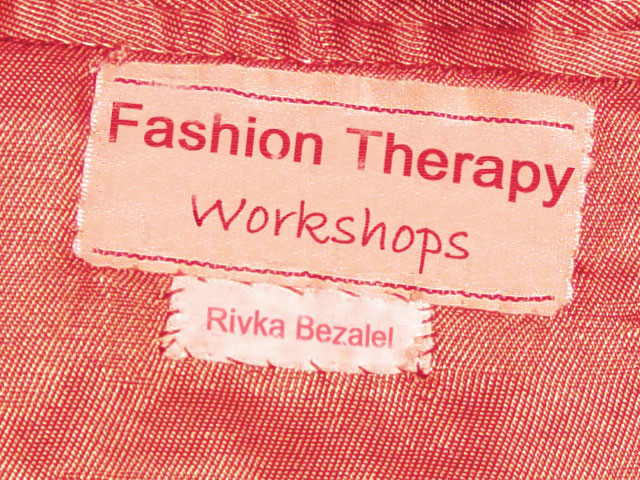
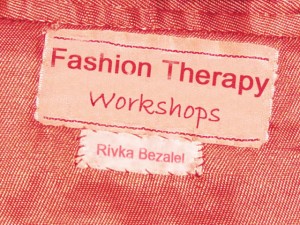 מהו הקשר בין תחושה של בגד לתחושת הגוף? מה אפשר לחוש כשלובשים את הבגד האהוב עלינו? כיצד יכולים הבגדים, והבחירה האישית בהם, לשמח אותנו, לזקוף את קומתנו ולתת לנו תחושה של "מקום בעולם"?
מהו הקשר בין תחושה של בגד לתחושת הגוף? מה אפשר לחוש כשלובשים את הבגד האהוב עלינו? כיצד יכולים הבגדים, והבחירה האישית בהם, לשמח אותנו, לזקוף את קומתנו ולתת לנו תחושה של "מקום בעולם"?



